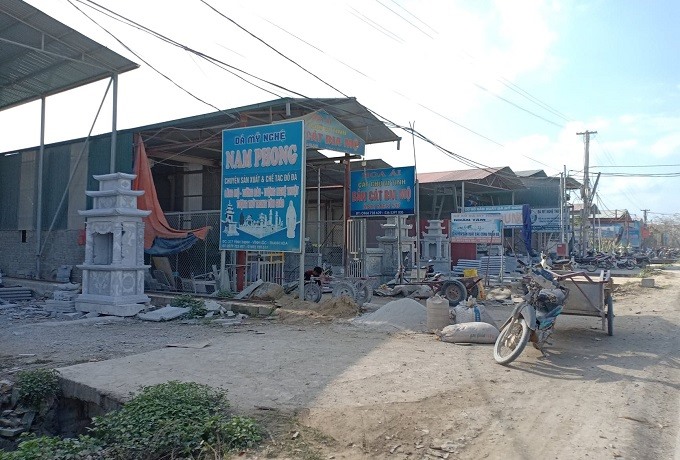 Environment
Environment

Kim Sơn National Landscape Site in the central province of Thanh Hóa has been seriously impacted by legal quarrying activities, reported online Vietnam Business Forum magazine.

|
HÀ NỘI — Kim Sơn National Landscape Site in the central province of Thanh Hóa has been seriously impacted by legal quarrying activities, reported online Vietnam Business Forum magazine.
The site is surrounded by 29 towering limestone mountains located in Vĩnh Thịnh, Vĩnh An and Vĩnh Minh communes in Vĩnh Lộc District.
The site is known for its beautiful and mysterious landscape, including dry and wet cave systems and Linh Ứng Pagoda.
It was recognised as a National Landscape Site in 2009, but recent quarrying exploitation has polluted the complex.
"Five years ago, this area was quiet and fresh," said Trịnh Thị Hương, a resident in Vĩnh Minh Commune told Business Forum.
"But now, it is noisy due to the stone splitting machinery. Dust covers the road and the vehicles cause traffic jams."
Linh Ứng Pagoda is located in a protected area but has been seriously affected by efforts to extract limestone.
"Whenever there is an explosion to exploit rocks people in the pagoda feel strong quakes from Hang Mountain," said Venerable Monk Thích Tịnh Hải, head monk of Linh Ứng Pagoda.
"Recently, a large rock from the top of the mountain fell to the ground in the area of the pagoda. Fortunately, no one was nearby. We want provincial bodies to ensure proper quarrying exploitation to protect the scenic beauty and ensure safety for tourists visiting the pagoda and the complex."
Seven mines are in operation around the site, all of which are licensed. Mines have operated in the area for more than 25 years.
Nguyễn Văn Tâm, Deputy Chairman of Vĩnh Lộc District's People Committee said the quarrying in the area excessive, despite it being legal.
"It causes dust pollution on Highway 217," Thao said. "If the licensed enterprises are affecting the landscape at Kim Sơn, the district will ask the province to revoke the license."
The provincial Department of Culture, Sports and Tourism has also made reports on pollution and the impact of quarrying around the site.
According to the department, although the quarries are outside the restricted area, they have made a direct impact on the landscape.
The department has proposed the provincial People's Committee prioritise enterprises with modern machinery and equipment and those that will limit the use of explosives in their work.
Previously, an inspection team from the department and the district discovered a series of illegal construction works in the core of the site destroying the landscape. Nothing was done about them.
A similar situation is occurring in Triệu Phong District in Quảng Trị Province.
Bãi Trận relic at the National Nguyễn Lords Historical Relic Site has a total area of 500 sq.m in Triệu Giang Commune, more than 400 sq.m of which has been encroached by the construction of a new road, legally built by the provincial Traffic Construction Investment Project Management Board.
"Bãi Trận relic in Phú Mỹ Village, Triệu Giang Commune was a place where Nguyễn Hoàng Lord decided to choose to camp," said Trần Văn Thi, deputy-head of the Information Culture Desk in Triệu Phong District.
"440 sq.m of the relict was made into a road".
The National Nguyễn Lords Historical Relic Site include residential palaces in Triệu Ái and Triệu Giang communes, as well as Ái Tử Town of Triệu Phong District.
The sites include Ái Tử Palace (used in 1558-1570), Trà Bát Palace (1570-1600) and Cát Palace (1600-1626) and Trảo Trảo Temple (Ái Tử Town).
It received special national certification in 2018.
"We are responsible for construction only," said Lê Vĩnh Phú deputy-director of the project management board. "We did not know about the relic site in the project." — VNS




